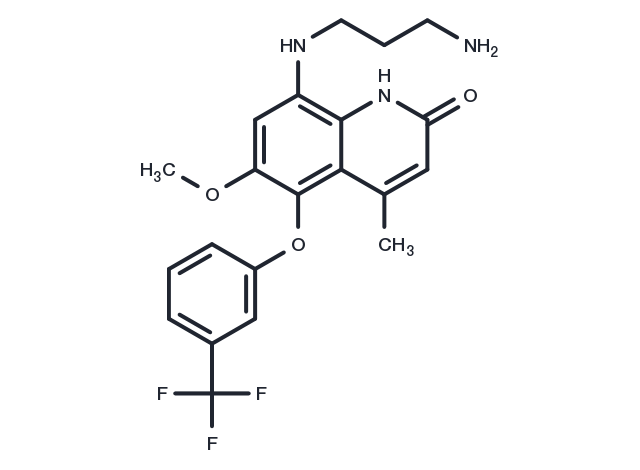Powder: -20°C for 3 years | In solvent: -80°C for 1 year


PQ1, as an enhancer of gap junction in SW480 human colorectal cancer cells can act by restoring GJIC and increasing connexin expression in breast cancer cell lines while not affecting normal mammary cells.

| Pack Size | Availability | Price/USD | Quantity |
|---|---|---|---|
| 25 mg | 10-14 weeks | $ 2,270.00 | |
| 50 mg | 10-14 weeks | $ 2,980.00 | |
| 100 mg | 10-14 weeks | $ 4,000.00 |
| Description | PQ1, as an enhancer of gap junction in SW480 human colorectal cancer cells can act by restoring GJIC and increasing connexin expression in breast cancer cell lines while not affecting normal mammary cells. |
| Synonyms | PQ-1, PQ 1 |
| Molecular Weight | 421.41 |
| Formula | C21H22F3N3O3 |
| CAS No. | 1609196-55-5 |
Powder: -20°C for 3 years | In solvent: -80°C for 1 year
You can also refer to dose conversion for different animals. More
bottom
Please see Inhibitor Handling Instructions for more frequently ask questions. Topics include: how to prepare stock solutions, how to store products, and cautions on cell-based assays & animal experiments, etc.
PQ1 1609196-55-5 PQ-1 PQ 1 inhibitor inhibit
